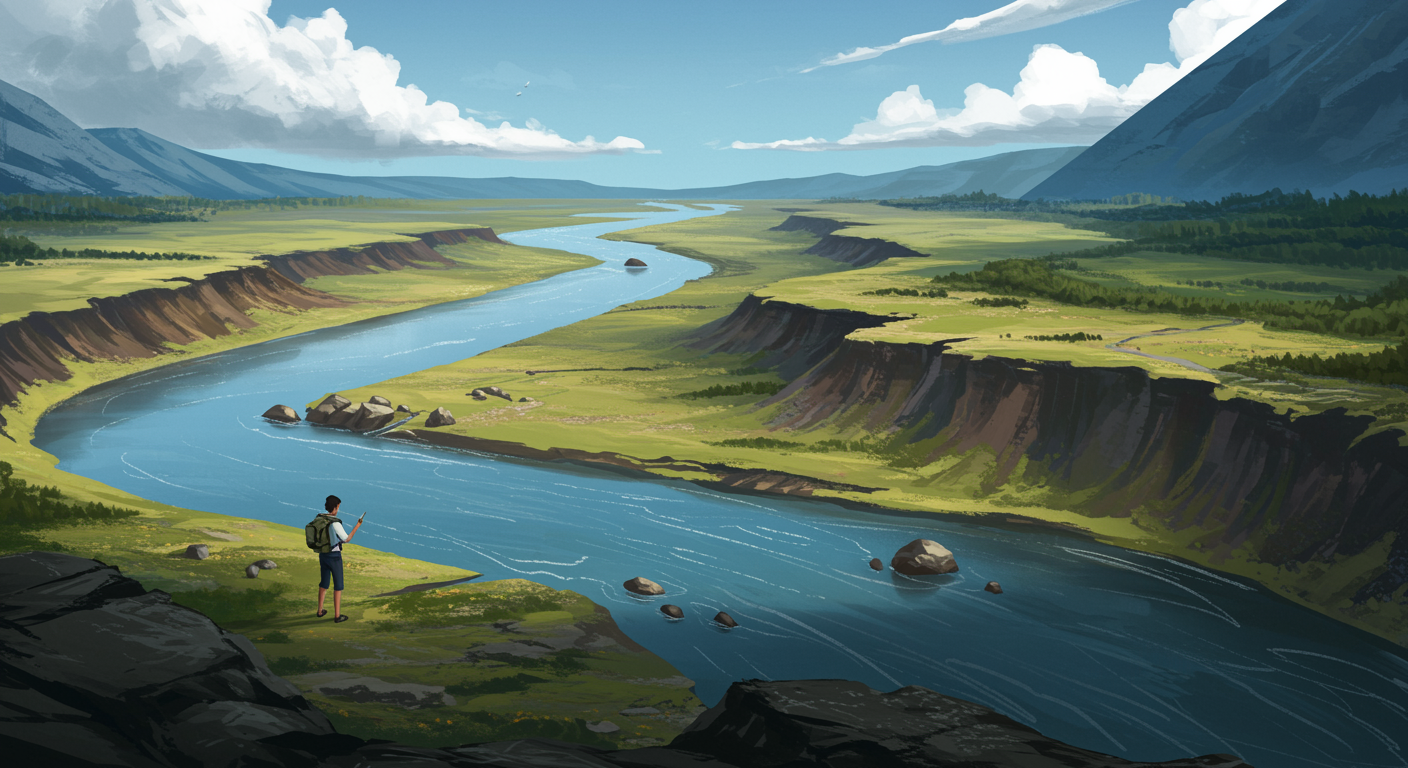
Picture a river, perhaps one you know well, a constant thread weaving through the landscape. It follows its course, carving valleys, nourishing ecosystems, and eventually reaching a larger body of water. Now, imagine if that river, rather than flowing onward, simply vanished. Not dried up, not diverted by human hands, but quite literally plunged into the earth, continuing its journey beneath the surface, sometimes for miles, only to reappear much later, or perhaps never quite the same.
This is not a scene from speculative fiction but a genuine geological phenomenon, one that showcases the hidden complexities of our planet’s geography. While many rivers flow uninterrupted from their source to their mouth, a significant number embark on subterranean detours, becoming what are known as sinking rivers or lost rivers. The question of how and why these aquatic disappearances occur reveals a deeper understanding of the forces shaping our world.
The primary explanation for these vanishing acts lies in a specific type of geography known as karst topography. This geological feature arises in regions where the bedrock is composed of soluble rocks like limestone, dolomite, or gypsum. These rocks are particularly susceptible to chemical weathering, meaning they dissolve when exposed to slightly acidic water. Over vast spans of time, slightly acidic rainwater seeps into cracks and fissures in these soluble rocks. Like a slow, relentless sculptor, the water gradually enlarges these tiny openings, creating an intricate network of subterranean channels, conduits, and vast caverns.
Once a surface river encounters one of these entry points, often a large fissure or a sinkhole, it can be entirely “swallowed” by the landscape. These points are commonly known as swallets or ponors. The river then navigates a subterranean labyrinth, sometimes flowing freely through cavernous tunnels, at other times seeping more diffusely through porous rock layers. This is why a river might seemingly ‘vanish’ for miles: its distinct surface channel ceases to exist, replaced by an unseen flow beneath the ground. The water doesn’t truly disappear from the earth, but its path becomes a hidden one.
Such disappearing rivers are not isolated curiosities; they are a significant feature of the earth’s hydrology across various continents and countries. Take, for instance, the Lost River in southern Indiana, United States. This river truly lives up to its name, flowing above ground for about eight miles before plunging into a series of sinkholes, embarking on a 23-mile journey through an underground cave system before emerging again. Similarly, the Yucatán Peninsula in Mexico is famous for its extensive network of cenotes and vast underground rivers, such as Rio Secreto, where entire river systems flow through limestone caves before reaching the ocean. In Slovenia, the Pivka River enters the Postojna Cave system and reappears as a new river, the Unica, many kilometers away.
The extent to which a river takes this subterranean detour depends on several interwoven factors. The purity and thickness of the soluble bedrock are crucial; purer limestone dissolves more readily. Climate plays a role too, as more rainfall means more acidic water to accelerate the dissolution process. Even ancient geological stresses, like faults and fractures, provide the initial weak points for water to exploit, creating pathways that surface water can then widen over millennia. These geological blueprints determine the complex maze the water will traverse.
These hidden waterways do more than simply transport water. They sculpt unique subterranean landscapes, creating habitats for specialized cave-dwelling organisms, many of which are found nowhere else on earth. From blind cavefish to unique invertebrates, these ecosystems are entirely dependent on the underground rivers for their survival. Furthermore, these systems represent critical components of regional water cycles, often feeding vast underground aquifers that supply drinking water to populations in these karst regions. This makes them incredibly important, yet also vulnerable to pollution from the surface, as contaminants can easily seep into their hidden flows.
The phenomenon of rivers disappearing underground highlights a fundamental truth about our planet’s geography: what we observe on the surface is often just a partial glimpse of a far more complex and dynamic system. These unseen journeys of water, silently carving out new paths beneath our feet, underscore the intricate, ever-changing nature of the earth’s surface and its hidden depths. It’s a compelling reminder that even the most familiar features of our landscape hold profound secrets beneath the surface, constantly reshaping our world in ways we often don’t see.